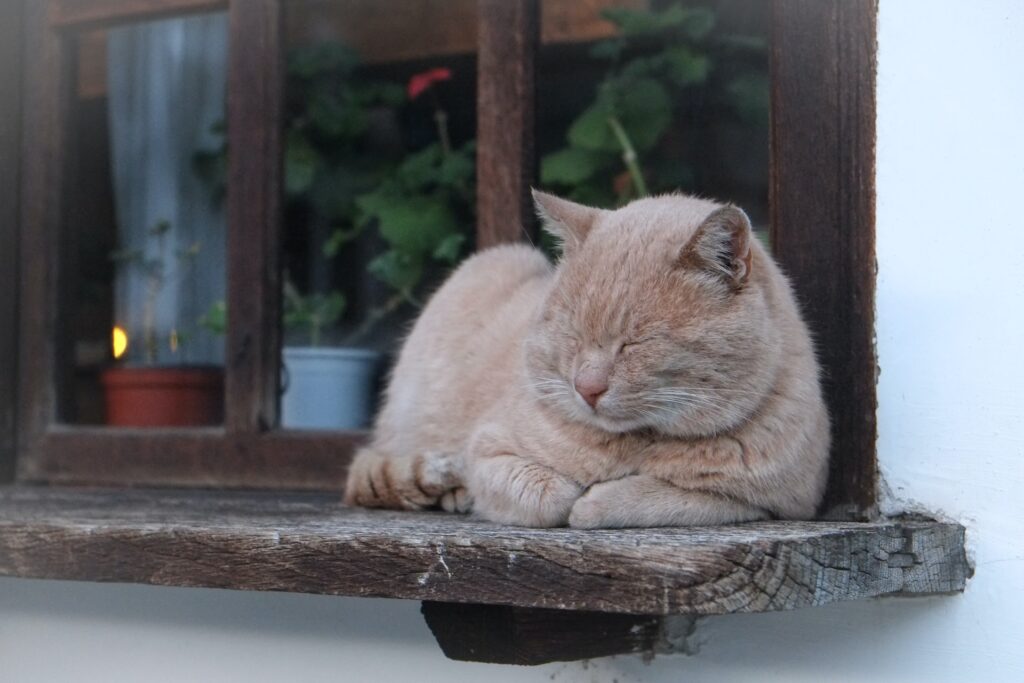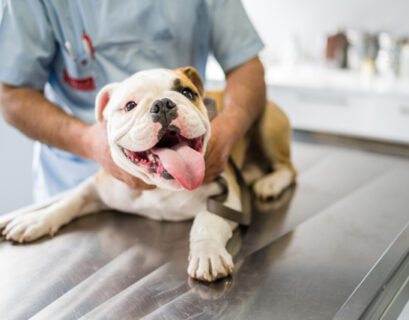Ensure your new kitten’s safety with expert tips on kitten-proofing your home. Create a cozy, secure environment for your furry friend to explore and play worry-free!
KEY TAKEAWAYS:
- Designate a safe space with essentials for your kitten’s adjustment.
- Secure surroundings against potential hazards like cords and small items.
- Introduce your kitten to other pets gradually, overseeing interactions.
- Create cozy hideaways and calm zones for your kitten’s comfort.
- Understand and embrace their curious and playful nature.
- Supervise closely and engage them with enriching activities.
Bringing home a kitten is like injecting your life with fun and mischief. Cats can win your heart with their cute little paws, cute little meows, and cute little antics. But before you give in to the allure of your new feline companion, it is essential to make your house a secure sanctuary for them. Yes, the skill of making your house kitten-proof is at hand!
Much like inquisitive explorers, Kittens may frequently find themselves in the unlikeliest locations. These explorers-in-training are raring to go on an adventure. Our job is to ensure their path is clear of dangers as they crawl under couches and climb bookcases. Our comprehensive “Kitten Proofing Your Home” guide will help you turn your house into a safe haven for your feline friends.
Making the Space Pawsitively Safe!
The Power Cord Is The Perfect Ambush!
Curiously, kittens love to gnaw on whatever they can get their little teeth on! It seems that electrical wires are on their “menu,” however, we would want to prevent any unpleasant shocks. How? Read on!
- Use cable organizers or sticky clips to keep cords tucked away and out of sight.
- Use cord covers or tubing to keep wires off the ground.
Feline-Proofing Fabrics and Furnishings
The excitement of scratching and discovering something new! We can’t stop them from being animals, but we can keep them away from your expensive furniture:
- You may fulfill your cat’s scratching instinct by purchasing scratching posts and pads.
- If you want to prevent kittens from climbing your furniture, double-sided tape may help.
Creating a Kitty Wonderland: Room-by-Room Safety

Kitchen Capers
Our kittens, like a different naturally inquisitive animal, can’t resist the kitchen’s allure. Follow these steps to prevent accidents in the kitchen:
- Knives, scissors, and other cutting implements should be kept in locked drawers.
- Put poisonous items (such as chocolate and onions) out of children’s reach.
- Cabinets containing chemicals should have childproof locks installed.
Living Room Larks
Your cat’s journey actually starts when it enters your house. Here are some precautions you can take:
- Select non-toxic houseplants for your cat, including spider plants and Boston ferns.
- To avoid accidents, anchor bookcases and other large pieces of furniture to the wall.
What is Kitten Proofing?
To “kitten proof” a home is to make it safe for kittens, which are naturally inquisitive and may be unpredictable. All that matters is providing a safe space where your furball can run about and be themselves without fear of harm. Risks must be identified, countermeasures taken, and your kitten’s individual features taken into account throughout this procedure.
How to Kitten Proof Your Home
Making a Secure Environment
Create a safe space for your kitten to adjust to its new home environment. This may be a nook or an extra bedroom. Give it a clean litter box, enough to eat and drink, some fun things to play with, and a soft place to sleep.
Taming the Temptations
Kittens have a natural inclination to investigate their surroundings. To begin, you should look for dangers where they may see them. Wrap up wires, stow away toys, and install cabinet locks to keep little hands out. Ensure your houseplants are safe, and use unpleasant sprays to deter your pet from chewing on the furniture.
Where Is the Best Place to Keep Kittens?
Giving your cat full reign of the house might be tempting, but they need to be introduced to their new environment slowly to prevent stress. Pick somewhere calm and uncrowded where they can feel secure. They may take their time getting used to the new sights, sounds, and scents in this first area. As they gain self-assurance, you may gradually increase their range.
- Kitchen and Kittens
The Kitchen: Soul of the House. Kittens may find the kitchen to be both an interesting and dangerous environment. Boundaries need to be set with several appliances, sharp items, and enticing odors.
- How to Make Your Way through the Kitchen Maze
While cooking, ensure your kitty stays away from the stove and counters. Due to their natural climbing prowess, kittens may benefit from having access to a cat tree close to the kitchen. Be careful around fires, and make sure your garbage cans have tight-fitting lids to deter dumpster divers.
The Fundamentals of Kitty-Proofing Your Home
It’s thrilling to bring a new kitten into your house. Still, you’ll also be responsible for making sure they’re healthy and happy there. “kitten proofing” your home is an important part of getting ready for your new furry pet. Your kitten will have a safe place to explore and flourish if you provide an environment that caters to its individual needs.
Kitten Proofing: Why It’s So Vital
To guarantee your new feline friend’s safety and well-being, “kitten-proof” your home is important. Curious by nature, kittens often put themselves in harm’s way when exploring their environment. Accidents, injuries, and accidental consumption of toxic chemicals may be avoided by “kitten-proofing” your house. Your mind will be at ease knowing your kitten may explore its environment without fear of harm.
What to be Wary of about Kittens?
The first step in creating a safe environment for your cat is realizing the dangers in your house. Typical threats include the following:
- Kittens have a habit of chewing on almost everything they can get their paws on, and electrical cables and wires are no exception. Accidental electrocution or other damage may result from chewing on cables. Make sure all cables are hidden out of sight or wrapped in protective sleeves.
- Kittens are naturally inclined to play with and bat at little items, which may be dangerous if swallowed. Rubber bands, paper clips, and buttons should all be kept out of their reach.
- Some common houseplants may be harmful if consumed by cats. The lily, the poinsettia, and the philodendron are just a few examples. You should research which houseplants are safe for your kitten and keep those that aren’t in regions where your cat can’t reach them.
- Cleaning supplies, detergents, and other chemicals should be locked away in cupboards that children cannot access. Swallowing even innocuous-looking objects like string may be dangerous.
- Kittens naturally climb, so keep an eye on any open windows or balconies. Put up some kind of fall protection, such as a sturdy screen or a net.
- Kittens may be drawn to candles and other open flames, which may be dangerous if the kittens knock them over. Keep candles away from your kitty, or use flameless ones.
- .All drugs should be stored safely in a lockable medicine cabinet. A kitten’s little body can’t handle even one pill.
By being aware of these potential dangers, you may take preventative steps to remove or lessen them, providing a secure environment where your cat can flourish. Your kitten needs a safe environment to play, explore, and develop without you having to constantly watch over it.
Creating a Safe Haven for Your Feline Friend

Protecting your kitty involves more than simply avoiding hazards. To do this, one must plan ahead to create a safe and comfortable environment that meets all of their requirements. Here’s how to make a safe space for your pet.
Creating a Safe Space for Kittens
Creating a safe space for your cat to hang out in while they get used to their new home is an important first step in kitten-proofing. This space has to be warm and inviting, with amenities like a soft bed, food and water bowls, a litter box, and fun playthings. Suppose you want your kitten to feel comfortable exploring their environment without feeling threatened. In that case, choosing a calmer place away from excessive foot traffic is best. You may gradually introduce them to other areas of the house as they become used to the current one.
The Art of Cord Management
Kittens have a remarkable knack for discovering cables and cords, which frequently transform into fascinating playthings. However, with careful cord management, mishaps involving cords may be avoided. This is how you should approach the problem:
- Invest in cable concealers to avoid having unsightly wires hanging about. These may be mounted on the wall or baseboard to protect your cat from dangerous electrical lines.
- Double-sided tape or cable tubing may be used to attach wires to the wall or an item of furniture. This eliminates the temptation for curious paws to gnaw on hanging cables.
- Kittens are naturally curious about heights, making vertical areas a tempting subject for cord investigation. If you have a kitten, use sticky hooks to keep cables up and away from the floor and the walls.
- Cord organizers: various cord organizers exist, bundling together several cords to make them less appealing to cats. These are great for placing at the back of desks and entertainment centers.
- If you want to minimize the clutter of cables in your house, consider wireless solutions. Devices like wireless speakers, chargers, and others completely do away with any and all safety concerns.
Mastering the art of cable management may help you build a more kitten-proof home by decreasing the likelihood of electrical mishaps. Remember that it’s not enough to conceal wires; you must also make them less accessible and attractive to your inquisitive pet. Every step toward providing a safe sanctuary for your kitten is important for their health and happiness.
Navigating the Kitchen: Challenges and Solutions
Kitten proofing may be especially difficult in the kitchen, the focus of culinary activity. Give this area some extra thought to keep your furry buddy secure and your peace of mind in the kitchen. The kitchen should be peaceful and harmonious for you and your kitty.
Kitchen Design and the Protection of Kittens
Kittens are curious and may find their way into the strangest places. Their inquisitive curiosity often leads them to investigate kitchen appliances, surfaces, and open cupboards. These helpful hints teach you how to safely maneuver your cat across the kitchen.
- Accidental burns from kittens being drawn to the warmth of stovetops are a common household hazard, so it’s important to take precautions. Use backburners wherever feasible to avoid unintentional burns from inquisitive paws, and think about putting stove knob covers.
- Kittens have a natural curiosity for climbing and exploring. Therefore, they may be interested in your countertops. Avoid putting breakables on worktops and provide your cat safe places to climb, such as cat trees.
• Keep an eye on the cabinets since curious kittens may try to open the doors. Place childproof locks on cabinets so your kitty can’t open them and get to potentially dangerous items inside.
Handling Food and Kitchen Appliances
Kittens often find the kitchen fascinating since the smell of food cooking may be alluring. However, there are several things you should avoid feeding or using around your pet. How to face these obstacles is as follows:
While giving your kitten a taste of what you’re eating is tempting, remember that many common human foods may harm cats. Chocolate, onions, grapes, and raisins are all examples of potentially poisonous foods. Make sure to leave perishable food out and lock up valuables like this.
• Garbage Problems Kittens often investigate garbage cans because of the interesting odors and textures they contain. Choose garbage cans that have tight-fitting lids and are located in inconvenient areas. Trash cans should be stored out of reach, either beneath the sink or in a cupboard.
• Kittens might be fascinated by the moving components of common kitchen equipment such as blenders, mixers, and toasters. Keep your cat away from any possible dangers while using these equipment.
Adjusting your kitchen layout and being cautious around food and appliances will let you and your inquisitive kitty live in peace. The trick is finding a happy medium between making your kitchen pet-safe yet fully functioning. With little forethought and ingenuity, you can make your kitchen a welcoming and secure area for you and your pet.
Welcoming a New Kitten: Kitten Proofing Essentials

Bringing a new kitten into your house is a wonderful experience, but it also comes with some serious responsibilities. To ensure your kitten’s safety, it’s important to “kitten-proof” your house. Considering their preferences and habits, you may design a safe environment where they can roam and play.
How to Get Your Home Cat Ready?
You must have your house for your new cat before they come. Think about doing the following to make your space more inviting:
- Set Up a Kitten-Safe Space: Create a secure environment for your kitten to explore and get used to its new home. Provide a comfortable bed, a litter box, and a place to eat and drink.
- Remove Hazards: Check your house for any threats and remove them if you find any. All windows and balconies should have tight railings and no dangling wires, and any tiny items should be removed from the home.
- Provide Scratching Surfaces: Kittens have a need to scratch. Therefore, it’s important to provide them appropriate scratching posts. Instead of allowing your cat to claw your furniture, give them a scratching post or pad.
- Introduce Hideaways: Allow your kitten access to safe hiding places so it can go there when it’s feeling anxious. Feeling safe in a cardboard box or on a blanket-covered bed is possible.
Understanding a Kitten’s Curiosity and Behavior
Kittens have a reputation for being very inquisitive and lively. Recognizing their individual characteristics may aid in the prevention of accidents and the establishment of a more secure setting:
- Exploration: Kittens are naturally inquisitive little creatures, so it’s no surprise that they want to examine new places. Anything swallowed or chewed on should be put away or secured.
- Climbing: Kittens have a natural inclination to climb, so secure any high furniture they may reach. You should consider establishing secure climbing structures and anchoring bookshelves.
- Chewing: Kittens, like infants, investigate the world via their tongues. Keep poisonous plants, tiny items, and wires out of reach to avoid choking accidents.
- Playful Nature: Kittens are full of boundless energy and love to engage in social play. To keep children occupied and active, play with toys that get them moving and thinking.
You can make your house a happy and healthy place for your new kitten if you take the time to learn about its needs and habits. The goal of kitten-proofing should be to provide a safe and healthy environment for you and your cat.
Making Your New Kitten Feel Secure
As your new kitten explores its environment, your main goal should be to keep it safe. Creating a safe home environment is a top priority for both of your sakes. You can make your home a happy and healthy place for your pet by being vigilant and knowing what dangers might arise.
Designating a Kitten-Safe Area
Creating a special area for your kitten to settle in is important in helping them get used to their new surroundings. To make your home kitten-proof, follow these steps:
- Choose a Quiet Spot: Select a calm, low-traffic place as your kitten’s first living quarters. This will aid in their adjustment to their new surroundings and prevent them from being too overwhelmed.
- Include Essentials: Ensure your kitten has access to the basics like a litter box, food and water dishes, soft bedding, and entertaining playthings.
- Gradual Exploration: Allow your kitten to progressively explore further from their assigned area as they get more comfortable doing so. This helps them avoid feeling overwhelmed and gives them a boost of self-assurance.
Securing Dangers such as Cords, Wires, and Other Tiny Items
Kittens are inherently inquisitive and want to learn more about anything that catches their eye. Their safety depends on their taking measures to eliminate risks:
- Cord Management: As kittens explore their environment, they may get entangled in electrical lines or choke on them. It’s important to keep your cat away from any electrical wires. Protect your cords from being chewed by using a cord organizer or a covering.
- Small Objects: Kittens are curious and playful creatures, so little objects like rubber bands, paper clips, and buttons may be both tempting and dangerous. Put these things in boxes or cabinets for safekeeping.
- Electrical Outlets: Use outlet covers to prevent your cat from inserting paws or other items into electrical sockets.
- Chemicals and Medications: Store any medicines, cleaning supplies, and other chemicals safely out of your kitten’s reach. Ingestion of even apparently innocuous substances is possible.
Designating safe areas and removing hazards is important in making your home safe for your new kitty. Your kitten’s safety may be guaranteed while providing it the freedom to explore and play if you consider these factors.
Making Your Kitten’s First Experience Easier

Suppose you already have other pets at home. In that case, you’ll want to take extra precautions while introducing your new kitten to everyone. You can help your kitten adjust to its new home by introducing it to it gradually and giving it safe places to escape to.
Slow Acclimatization to New Pets
If you already have pets, it’s best to gradually ease them into the new additions. How to Make Things Fit Together Easily:
- Separation Initially: For the first few days, it’s best to keep your new kitten in a different room to become used to your smell and the noises you make. This helps keep encounters from becoming too intense.
- Scent Exchange: You may use scent exchange by rubbing a rag on your new kitten and then placing it near the sleeping quarters of your existing pets. This allows them to become used to one another’s aromas before meeting.
- Supervised Meetings: Once your new kitten looks at ease with other animals, you may introduce them briefly under close supervision. Create happy connections with the use of sweets, toys, and praise.
Calm Spaces for Your Kitten to Retreat
It’s important to provide your kitty a place to escape the world and relax. Methods for Creating Peaceful Environments
- Cozy Hideaways: Covered beds, cardboard boxes, and plush blankets are excellent hiding places for your kitty. When they need a break, they may go to these places and feel safe.
- Vertical Options: Cats want to be high up. Provide your kitten with a secure perch to examine its environment by setting up cat trees, shelves, or window perches.
- Quiet Zones: Locate secluded areas in your home where your kitten may have some peace and quiet. Provide a comfy bed and toys in a space other animals can’t access.
Patience and forethought are required to make the transition to your new kitten’s home as smooth as possible. Set the foundation for a peaceful and joyful living with your other pets by introducing them to each other gradually and providing quiet retreat spots.
You’ve made it this far in your quest to “Kitten-Proof Your Home,” so please accept my hearty congratulations! After reading this manual, you now know how to make your home a comfortable and safe place for your cat. Remember that every precaution you’ve taken makes the planet safe for exploration and pleasure. Thanks to the welcoming and secure setting, you and your animal companion are ready to make some wonderful memories. Here’s to a lifetime of happiness, laughing, and purrs that will melt your heart.
Remember that kitten-proofing is equal parts ingenuity and pragmatism as you set out on your expedition. Individual kittens have distinct personalities, and familiarity with their habits might help you avoid harm. The plan is to provide them a safe place to grow into self-assured, content felines. So go ahead and design a safe environment that reflects their lively nature.








